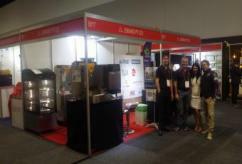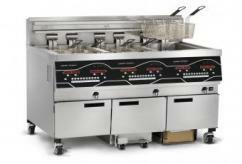
There’s no doubt—food prices are soaring. According to the Australian Bureau of Statistics, the annual inflation rate hit 6.8% in April 2023, with food prices being a significant contributor. This ongoing cost-of-living crisis is pushing consumers to reassess their dining habits. Despite this, restaurants might hold a slight advantage. While grocery prices have surged, dining out at restaurants and fast-food outlets hasn’t seen as steep an increase, making it a more attractive option for many Australians.
For restaurant operators, this advantage is vital as they actively explore ways to minimise the impact of inflation on their business and their customers’ wallets.
It’s often said that necessity is the mother of invention, and restaurant operators in fine dining, fast casual, and quick-service establishments are showing remarkable creativity. From slimming down menus and adjusting portion sizes to introducing new value deals and employing “menu engineering,” Aussie restaurateurs are exploring cost-effective solutions.
Leverage Your Kitchen’s Workhorse: The Deep Fryer
Beyond the usual cost-cutting measures, there’s an often-overlooked opportunity: your commercial fryer. Nearly every restaurant kitchen has one, and when used and maintained properly, this workhorse can significantly drive profitability.
In Australia’s foodservice industry, fried foods are a staple. The commercial fryer is one of the most essential and expensive pieces of equipment in any kitchen, with fried food products generating strong profit margins. Globally, the market for deep fryers is expected to exceed $612 million by 2026.
With the right fryer, operators can achieve savings in oil usage and energy costs while increasing throughput. Some low-oil volume fryers, for example, can save up to $7,500 AUD annually in oil costs compared to older models.
Here are three expert-recommended strategies to make the most of your commercial fryer during challenging times.
1. Maximise Your Fryer’s Output
Your commercial deep fryer is one of the most versatile pieces of equipment in your kitchen. Whether it’s frying crispy chips or tender chicken, you can do more to maximise its potential and increase profits.
Consider Catering:
Shelley Swartztrauber, owner of Rob’s Restaurant & Catering in Brookville, Ohio, shares her experience of using a Henny Penny pressure fryer to expand her business during the pandemic. By frying buckets of chicken for takeaway orders, her fryer helped sustain the business during difficult times. In Australia, a similar approach could help operators diversify revenue streams, particularly with an increased focus on delivery and takeaway services.
Explore Virtual Brands:
Launching a virtual restaurant brand that operates out of your existing kitchen is another way to increase throughput. HOA Brands, the parent company of Hooters and Hoots Wings in the US, has successfully launched virtual brands that leverage their fryers. Aussie restaurants could follow suit by introducing virtual brands that use their existing menu to reach new customers without adding unnecessary complexity.
2. Prioritise Profit-Producing Menu Items
Fried chicken will always be a staple, but expanding your fried offerings to include cost-effective, high-margin vegetable dishes can boost profitability. Chef Gregg Brickman, Corporate Executive Chef, suggests fried vegetable dishes like bang-bang cauliflower, spicy edamame, or sweet potato fritters. These items are increasingly popular with Australian diners who are seeking healthier or plant-based alternatives, and they offer a higher profit margin than traditional meat-based dishes.
Celebrity chef Wolfgang Puck has embraced this trend by offering more vegetable-centric dishes as a cost-saving strategy. Australian restaurants can do the same to keep costs down while offering enticing options to customers.
3. Optimise Your Fryer’s Performance
To get the most out of your fryer, regular maintenance is crucial. A well-maintained fryer will not only last longer but will also save on costly repairs and prevent downtime, which could lead to lost revenue. Simple daily cleaning routines and oil filtration practices can extend the life of your fryer’s oil and improve food quality.
Henny Penny fryers, for example, come with built-in maintenance prompts that make it easy for staff to follow cleaning procedures. This is particularly useful in Australia’s hospitality industry, where high staff turnover is common.
Using an oil-life extender product, such as Henny Penny’s Prime Filter Powder, can further reduce the frequency of oil changes, saving money and keeping the fryer running at peak efficiency.
While the broader economy remains uncertain, Aussie restaurateurs can take proactive steps to maximise fryer output, offer high-margin menu items, and maintain their equipment for optimal performance. With these strategies in place, you can mitigate the impact of inflation and ensure your business thrives in the long term.
Ready to explore what a commercial fryer can do for your kitchen? Connect with the J.L.Lennard team today to get started!
September 18, 2024 | By: Rosie Ranck









